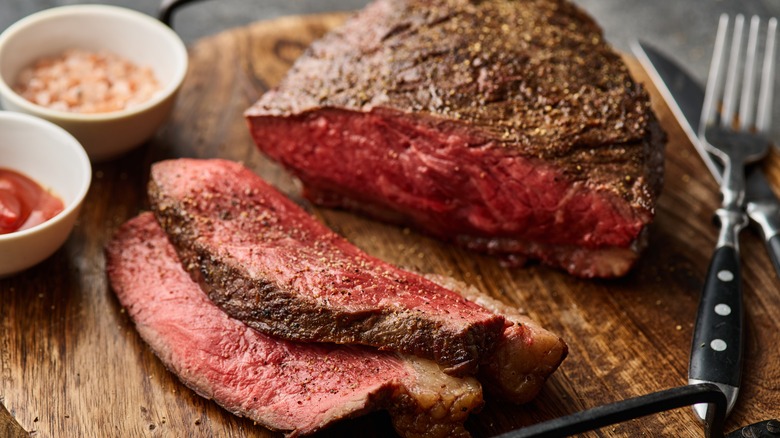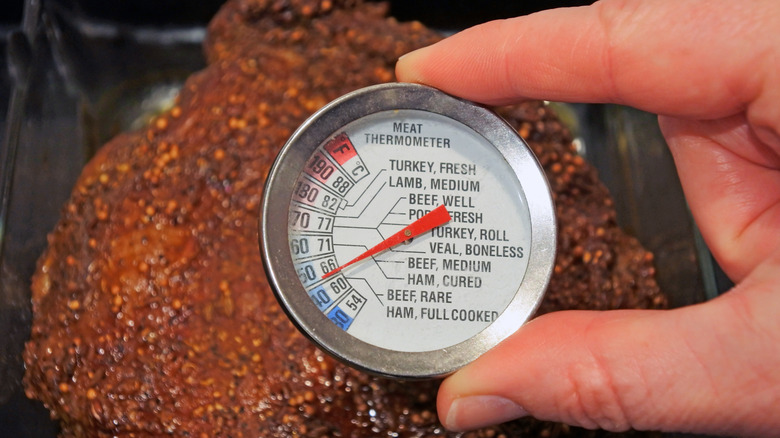The Trick For Making The Most Out Of A Cheap Cut Of Roast Beef
Who doesn't love a piece of tender roast beef? Although delicious, it can be expensive, especially with the recent increases in the cost of food. Sometimes you can find deals on meat, especially on specific cuts, often the leaner type. If you've ever prepared one of these cheaper roasts or cuts of beef, you may have ended up disappointed by the texture, flavor, or both. However, there are ways to ensure that you get an optimal outcome — it all comes down to some prep work and an inexpensive gadget.
As outlined by Everyday Cheapskate, there's one prep method to working with these cheaper cuts and it involves a bit of planning ahead by salting the meat and letting it sit in the fridge for 24 hours. According to the article, letting salt penetrate the meat for this period helps break down the proteins, which improves the texture. The Washington Post echoes the salting method, calling it "dry brining."
It's all about temperature control
Another trick that transforms a cheaper cut into tender perfection is through monitoring the temperature. This goes beyond setting your oven at a specific temperature and then walking away. The way to achieve the best results is by investing in a meat thermometer, which you insert into the thickest part of the meat. The thermometer allows you to monitor the internal temperature of meat and takes the guesswork out of whether or not it's cooked to your desired doneness.
If you've never cooked with a meat thermometer, don't fret, because they're easy to use. MasterClass outlines how to use and test your meat thermometer to make sure it works correctly. Once you've gotten the hang of using the device, it will unlock tender beef, no matter the cut. As reported by Cook's Illustrated, if you use a thermometer it also gives you a baseline to work in time to allow the meat to rest, which can be pivotal to ensuring the texture, tenderness and flavor are optimal.

